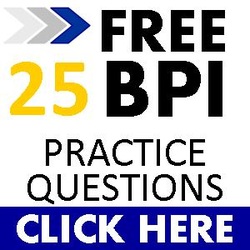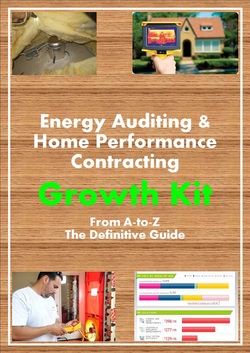Passing the BPI Exam With Energy Auditor Training
FREE BPI PRACTICE EXAMPUT YOUR HOME PERFORMANCE BUSINESS ON ROCKET FUELENERGY AUDITOR NEWSLETTERGet the only Energy Auditor Marketing Newsletter with monthly strategies and tactics to grow your home performance business.
|
BPI Written Exam - Section 1 Building Science Fundamentals5. Power and Energy: BTU Content of Fuels, Capacity of Combustion Appliances and Electrical Appliances
See also related section on power vs energy. Want to know if it is cost effective to switch from an electrical water heater to a gas water heater? Who is charging more for their utilities, the electric or gas companies? What size furnace do you need for a 3,000 sq ft home with 15% window coverage and 10 foot ceilings? You will be able to answer all these questions by knowing your energy content of fuels conversions.
See the Help, I Hate Math section for help with conversions. If electricity is commonly reported in units of kWh, and gas in therms, how do we compare the two? To make apples to apples, we need to convert to BTU's. BTU Content of Fuels A BTU is the fundamental unit of all energy types, be it therms of gas, kWh of electricity, gallons of fuel or cords of wood. All types of energy has different "efficiencies," or a specific amount of energy content contained in each type (this is different than an appliance efficiency). For example, 1 kWh = 3413 BTUs of energy, 1 therm = 100,000 BTUs of energy, 1 gallon of fuel oil = 140,000 BTUs. Capacity of Combustion Appliances Appliances such as our water heater and furnaces are sized according to the expected heat gain and energy and water usage of the homeowners. Common single family gas water heaters come in 40 gallon (40,000 BTU typical capacity), 50 gallon (36,000 to 60,000 BTU typical capacity) or 80 gallon (75,000 to 125,000 BTU typical capacity) tanks. The higher the BTU input the faster the tank will recharge its hot water. Furnaces are given an input BTU rating as a function of their size. The output BTU rating is a function of the furnace size and its efficiency or output capacity. Read more about input and output capacity here. I've listed some typical furnace sizes below and the corresponding AC compressor size. As you can see, the compressor size is not always consistent with the furnace size.
40,000 BTU - 3.5 ton AC compressor44,000 BTU - 4 ton AC compressor 50,000 BTU - 3 ton AC compressor 52,000 BTU - 3 ton AC compressor 60,000 BTU - 3 ton AC compressor 75,000 BTU - 4 ton AC compressor 88,000 BTU - 3/3.5/4 ton AC compressor 92,000 BTU 96,000 BTU - 4 ton AC compressor 100,000 BTU - 3.5 ton AC compressor 110,000 BTU - 5 ton AC compressor 120,000 BTU - 4/5 ton AC compressor The furnace capacity will be listed on the name plate data which you can find by taking off the furnace plate. Next Section1a. Basic terms and definitions
1b. Principals of energy, air & moisture
1c. Combustion science
|

